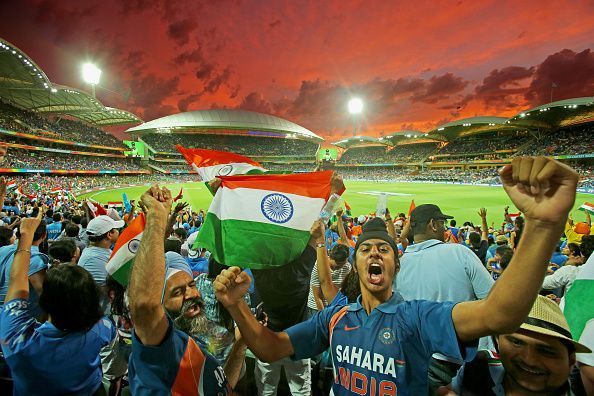
The cricketing scandal no one is talking about
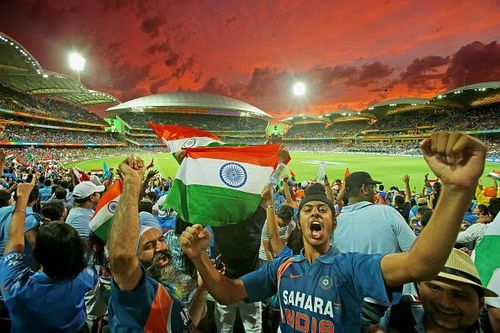
Stop. We will get to the scandal. We will get around to the juicy details. There is plenty of time for that. Where are you right now? Are you at work? In a cubicle, just another bee making honey for an unknown master? Are you taking a ‘break’ from college textbooks to see what Virat and the gang are up to? Maybe you’re sitting on the pot, phone in hand, spending whatever little time you have to yourself on finding out what Team India are up to.
I get it. Cricket is the ultimate distraction. And hell, doesn’t society need one - life sucks sometimes. Cricket gives us a dual life. Turning on the game is jumping into a world outside our own, one with shiny lights, cheerleaders, big sixes and fast bowlers. It’s a safe haven as much as it is noise cancelling headphones. It’s a TV show, with rules you’ve known since you were a child. It captivates us like nothing else, and we gravitate towards it, stuck helplessly in orbit, entirely consumed in its aura. At some time in each of our lives, cricket is everything.
Everybody has an embarrassing moment where they’ve taken fandom a bit too far - a cringy Facebook comment war, a fight with a loved one or maybe a sacrifice a little too big. It’s not about the cricket, it’s about you. It’s about where you are right now.
Your relationship with the game has nothing to do with stats or logic and everything to do with your dreams, what Dhoni’s World-Cup winning heave over long-on meant to you, who you are and who you want to be. You’re a fan because of what cricket brings out in you that nothing else can. You don’t worship Kohli’s cover drives because of his poise or balance or even his grace and elegance but because when he’s at the crease you feel safe.
As long as he is batting, India feels safe.
1000 false Gods
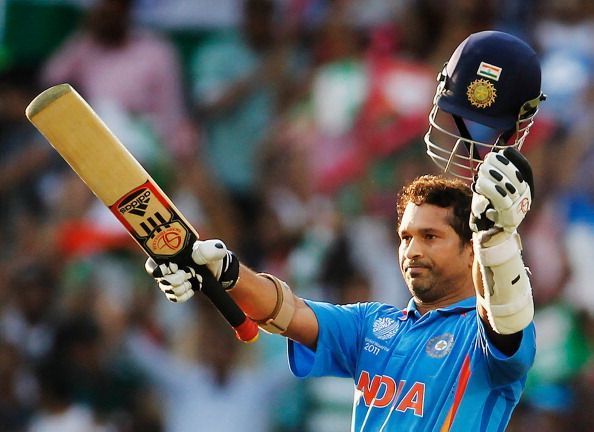
Cricket is a religion not only in its ability to give us customs and traditions but also in its ability to give its followers meaning and direction - it gives us faith. Cricket matches can have just as much significance as a prayer or an aarti. Nobody can say Hajj or a pilgrimage is holier than going to the Wankhede to watch a World Cup Final.
Like most religions, cricket has its deities. Just ask the 30,000 plus who chant for their Lord Sachin, years after his retirement.
Throughout India, the nasty aftertaste of a long history of social suppression remains. Indians were virtually slaves to the British for centuries, and a strict caste system still dictates our place in society.
While India’s imperial residue left her with both the subject and language of this article, it also paved the way for an inferiority complex that continues to haunt every Indian, no matter how young, rich or anglicised he or she is.
From this inferiority complex, India creates heroes for itself. Figures that Indian society holds up to unrealistic expectations. Religion, Bollywood and Cricket. This legendary trifecta captures the imagination of Indian society. And as a result, cricketers are right up there with God when it comes to celebrities in India.
They receive the same adulation, faith and reverence as deities when things are going well but get the same blame as Gods do on bad days. They are India’s superheroes, every game is another fire that only Captain Cool can put out. Indians put their cricketers on a pedestal, garlanding them, showering them with sponsorships and gifts, building them temples and shrines but all the while forgetting that they are actually human.
***
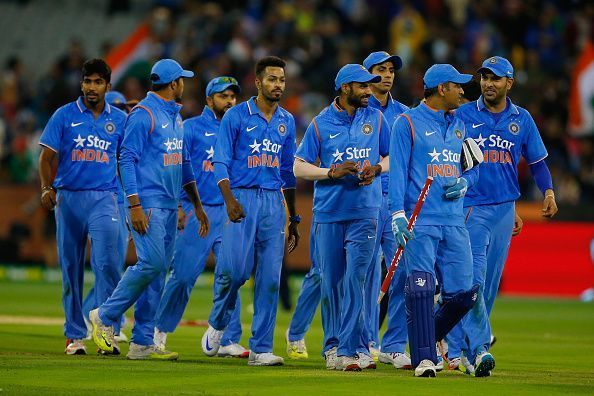
Cricket permeated to every Indian household with Jagmohan Dalmiya’s introduction of private broadcasting for cricket matches in the late 1990s. It was only then that the cricket industry had the money to become one of the pillars of Indian society. This, of course, was years after Bollywood had already established itself. As a result, cricketers were placed in the moulds that actors were already in.
They lived their professional lives outside reality on screens, while we sat glued to the TV, gobbling popcorn as they went about their jobs, in ‘roles’, carefully constructed. Pujara is the nerdy friend who does nothing wrong, Kohli the firebrand, Ishant the weird one you’ll never truly like.
And like Bollywood, society is intent on focusing on everything but what cricketers are famous for - that’s boring, you see. It’s all about trying to find the people and personalities behind the masks society created for them in the first place. Nothing is too personal, privacy is a myth. Their lives are our lives. We’re living out their reality - our greatest fantasy.
What do you expect from them? Most of our cricketers are just middle-class boys and girls who dedicated their lives to perfection. They’re just talented young people who pressed ‘pause’ on life to pursue their goals – and made it. But that’s not good enough for a public that keeps wanting more.
Scoring runs and getting wickets is not nearly enough. Cricketers need to say the right things, endorse the right products, have the right attitude. Everyone's an expert, yet the cricket is nearly irrelevant. A billion fickle minds are swayed to love and hate individuals, swept away in the media circus that comes with every game.
Take the case of the Champions Trophy finals this year. It started off with poorly-made cricket arguments, blaming the loss on that run-out, blaming Bumrah for his front foot and Dhoni for his age. Then, as the snowball collected anger and hatred, all hell broke loose. “The Indian players don’t respect the troops”, “Virat Kohli was born in Pakistan”, “Kohli and Yuvraj must have fixed the match.”
What is this nonsense? Security had to be beefed up outside cricketers’ houses after the loss – the former captain was actually in physical danger after losing a game. But we’re immune to this sort of news.
Think about it for a second. Imagine the risk of getting shot for making a mistake at work. Imagine getting thousands of threatening tweets because your wife’s arms are not covered. Are you that shallow, India? What part of Indian culture makes this so commonplace? When did it become a tradition, a virtual who's-who of criticism every time India lose?
First a Twitter storm, then former players, then the politicians, all the while the internet media and TV news goading them on with provocative articles and headlines. What we don’t realise is that very little of this is inspired by patriotism or even allegiance to one’s team. It’s all about the money.
Money Money Money

Like big religions, cricket is a multi-billion dollar industry. Most of the money comes from television broadcast rights – the 2011 World Cup semi finals was watched by almost 600 million people, so you can just imagine the money that selling advertisement time rakes in.
The primary beneficiaries of this money are the players, the boards and the broadcasters. But the money does not stop there. News channels, cricket websites and sponsors are waiting in the wings, ready to feast on the fan’s eyeballs. After all, the fans want more. More stories, more stats, more news, more opinions, and that’s a good thing.
A young India is a connected India and nothing can stop it from being connected to the cricket media. And don’t the sites know it. It’s always about targeting content to what is ‘trending’. Views are worth a lot of money, after all, and the media are forced to cater to what the public finds ‘interesting’ at a certain point of time to stay in business.
Most advertisements earn around $2 per thousand views on the website they are pasted on. Hence, the most viewed content, rather than the best researched or most informative, earns the most money. The young Indian men that constitute the lion’s share of viewing audiences dictate content, as the cricket media industry revolves around their views, shares and clicks.
Click here to find out more
The title doesn’t tell you anything. It isn’t supposed to. Tabloid journalism, fake news, click-bait – call it what you like, but it works on the same principles. The headline and byline are advertisements – the readers are gullible consumers. “Indian cricketers caught in major media scandal, sources report.” Just enough for a sniff, not enough for a meal.
You want it, you know you do. You don’t want to know about Tom Latham’s defensive technique, do you? You want to live a day in your idols’ shoes, you want to know what it’s like. What are they like? What do they do off the field? Are they just like you? #relatable.
Content is created to target this audience rather than talk about cricket. This content is then pumped to an unexpected public, who get hooked on irrelevant and possibly inaccurate content.
This new-found demand for undercooked content not only devalues the time and effort spent on proper cricket journalism but also forces the industry to meet the demands of the public. It’s a vicious cycle that preys on our most basic instincts, jealousy and curiosity.
Type in a cricketer’s name on Google and autocomplete will proudly ask you if you meant to add “wife” or “girlfriend” to the end of your query. It’s innocent envy but it is turning reporting on its head. No longer do journalists try to pick out interesting plays from games – instead, they scour Twitter feeds to see if someone said something controversial. They don’t enjoy doing it, but that’s their bread and butter in an already saturated economy.
The advent of technology in India has also precipitated the rise of thousands of media outlets, all of whom can build a presence online with Twitter, Facebook and Youtube. On a Facebook feed, every article looks the same, every book is judged only by its cover. An article that takes tens of hours of meticulous research to write looks the same as a slightly racist hot take on Pakistani cricketers.
But I mean, what’s the harm?
The problem is that with cricket media spending less time and fewer resources on research, it voids the sport of its art. Cricket has long been renowned for its literature, a result of the duration of the cricket match as well as its roots in high society. Not only does clickbait undermine that, but it also diverts the public from focusing on the game.
To go back to the India-Pakistan Champions Trophy final, which was a momentous occasion for Pakistan cricket, the Indian media failed to cover Pakistan’s incredible journey. Instead of talking about Mohammad Amir’s redemption, Sarfraz Ahmed’s feat or Fakhar Zaman’s destruction, it spoke about Twitter reactions, Indian fan outrage and the ramblings of power-crazed government officials and Kashmiri separatists. The cricket got lost in the smoke and dust of a media circus pandering to get votes, either through ballot boxes or view counters.
***
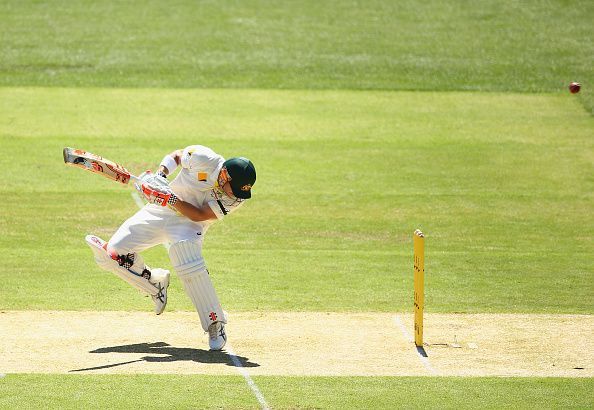
Cricket was created, in most senses, to replicate life. A batsman’s stay at the crease is his journey from a flailing child to a tired old man – if, of course, he isn’t cut down by fate before his time. The cricket media exists to tell the world that story of resilience. Its purpose is to find meaning in a game, to find meaning in life.
Without the media, Harmanpreet Kaur is just another girl who swings a piece of wood, Mitchell Starc is a pretty quick bowler and the enormity of Temba Bavuma’s struggle to the top is lost on the public.
Cricket is the game that it is because of the way it’s written about, spoken about and enlivened. Allowing a Bollywood style, page 3, sensationalist media presence to take over that world is not only wrong, but dangerous for the game. But it’s not an issue that will ever be taken up by the higher powers who do not identify it as one of the problems the game faces but actively gain from the public’s distraction.
And finally, the scandal you were after…
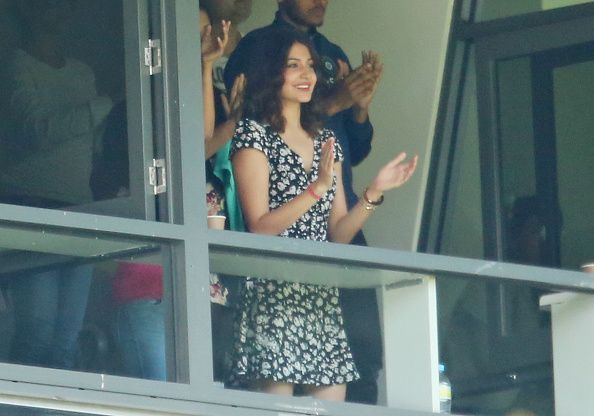
I began this essay by asking you, “Where are you?”. It might seem like that was a long drawn-out way of getting to my actual point, but that is not the case. In fact, you are important. And where you are in your life is even more important. You see, you live in a democracy. In a democracy, everyone has an equal vote, everyone has an equal say in their governance.
But you know that’s not true. You know very well that in India, more than most places, there is a strict hierarchy. The ones on the top of the food chain are the ones whose names are said in hushed tones and scared voices while the ones at the bottom are just faces in a burgeoning crowd. Essentially, you’re either a decision maker or a follower.
Noam Chomsky, a renowned historian and political activist at MIT, described the two groups as the specialised class and the bewildered masses. The specialised class are those who go to the top schools and colleges, those whose families own businesses and those that control the media.
These are the people who form the upper echelons of society: the politicians, the businessmen – essentially the ‘saabs’. They all know each other. It’s a members club that takes generations to permeate in India.
The bewildered masses is everyone else, those who live under the silent rule of the specialised class. Arvind Adiga, in his book The White Tiger, corroborated this theory, explaining that there are two Indias, an India of light and an India of darkness, and the best someone from the darkness can hope for is that their grandchildren make it into the light.
Most of us are somewhere along the process from darkness to light, which is why it is important to ask, where are you?
You likely know which people I mean when I describe the India of light. It is how they stay in ‘power’ that is a study relevant to cricket. Chomsky lists the ways in which the ‘specialised class’ manipulates the ‘bewildered masses’ to allow them to make decisions for all of society, despite everyone getting an equal vote as everyone else.
He argues that the cornerstone of manipulation is distraction. When you are watching a Bollywood film, what are you not doing? You are not thinking about the rising neo-fascism of India’s right wing. When you are crowding outside Salman Khan’s Bandra house, you are actively not protesting against the attacks on your right to speech.
The specialised class controls the media, which allows them to control the narrative. If the narrative is never about the real issues, it never allows the public to get informed or have a say. Chomsky talks about the ways in which the specialised class interact with the masses. By deferring from issues, talking to the masses like they are infants, appealing to an emotional argument and propagating ideals like ignorance and stupidity, the India of light keeps the darkness put: there is a strict glass ceiling.
So who controls cricket in India? It’s in the name. The Board of Control for Cricket in India. They, along with the higher ups of the media, are part of India’s specialised class.
The ousted president, Anurag Thakur is the son of former Himachal Pradesh Chief Minister and a politician himself. Amitabh Choudhary had former BCCI President and general baddie, N Srinivasan, as his mentor. Srinivasan has a net worth of $80 million, is affiliated with the Chennai Super Kings franchise, is a major industrialist and his brother heads the Indian Olympic committee.
Anirudh Chaudhry’s father was a former BCCI President. In fact, it is almost impossible to find a BCCI post-holder who is not affiliated with politics or big business. If that is not a clear indication that the BCCI is run by members of the specialised class, then nothing is.
However, it is important to note that in India, players are not a part of the elite club that controls cricket. In fact, with no union and everything to lose, the players are pawns in the game of corruption and power-mongering that the BCCI plays.
Every player has a backer: some politico to whom he owes his rise – MS Dhoni famously has N Srinivasan, who allegedly was behind him becoming India’s captain. The nepotism and ‘bada bhai’ (older brother) attitude that players have with these patrons early in their careers allows politicos to wield influence with the players, keeping them in their neat little uniforms, looking good for the camera while they go about their dirty business, out of the public’s eye.
When was the last time an Indian player, former or current, hit out at the BCCI? Such things are normal in any line of business, even in other cricket boards. The fact that the Australian Cricketers Association, the cricketers’ union, can negotiate with Cricket Australia is a sign that Australia has the kind of transparency the game in India can only dream of.
The only person who stood up for the players in recent times was Anil Kumble, and he ‘resigned’ after only a year. The point that gets underlined over and over again is that the only people with any real power are those in the power business, the BCCI.
The same techniques used by the ‘specialised class’ these men are from, are used in the world of cricket to keep the fans oppressed. The BCCI are masters of controlling the narrative. Every commentator lives in fear of their perennial masters. With a directive from their overlords in the form of a contract, they are too scared to comment about BCCI policy, selection or even criticise the Indian players.
When India drop catches, commentators line up to mollycoddle them, blaming the harsh winds, the outfield or simply talk about how much of an anomaly it is. Every so often you have a commentator fired (and then later re-hired) for something innocuous.
Harsha Bhogle was fired for being unbiased, Sanjay Manjrekar for saying that Virat Kohli would be India’s next captain. It’s about sending a message. Commentators shudder and shake in the light of a major BCCI controversy, deflecting, ignoring and continuing their robotic dance of sporting clichés and Kohli-praising.
They are the ones that most of India hears, so if they go into the boxes with a huge grin, telling the fans that everything is just fine, the public is none the wiser about the BCCI’s indiscretions.
Surely it is impossible for the BCCI to squash every news channel in a country of a billion-plus people. It is. What they do is defer and distract. The BCCI keeps itself shrouded in mystery, while it allows its coaches and players to be harassed and probed by the media for views.
Cricket Administration is not sexy and the BCCI knows it. While the stories about corruption and nepotism are covered by the media, they are buried in a 24-hour news cycle that cares little about committees and reports and allegations and much more about Virat Kohli’s relationship with Anushka Sharma.
In the last week, cricket in India went through its most damning judgment, where the highest court in the land allowed a bunch of self-serving officials to pick and choose which Supreme Court recommendations they would like to implement, completely obscuring Indian cricket’s only chance at transparency.
Yet, the public did not care. The Sportskeeda piece on the BCCI’s rejection of five key reforms got just 120 views. The BCCI has managed to convince a country that its heroes are powerful, all-conquering travelers. It has trained a nation to focus on the pawns, whose every move is filmed and every tweet written about, while they sit in their offices, leeching the fans for power.
The headlines target the ill-informed, stupid fan; every time BCCI officials conduct press conferences, they speak about how they are honorary members doing a job purely out of love for the game. It’s all just a way to keep the average fan in ignorance, separated from the real issues.
But the question is, why would so many politicians and industrialists care about corrupting a game? It’s not about the industry they are in, or the district in which they are running for election: it goes back to the fact that in India, cricket is part of a holy trinity.
A politician needs to control cricket to control the masses. When India win a game or a great of the game retires, politicians will flock to the grounds to sing praises. When India lose, they rally the public against the country, counting their votes while they do it. But this is not the story told, or even the story you want to hear. It’s not got sleaze or drama like the ones in the news, or flashy cars and charismatic heroes like in the movies, but as a cricket fan, it is what should affect you the most.
You and Me
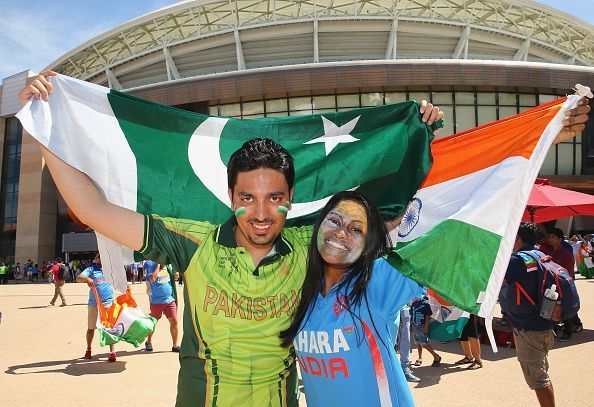
As I told you, this is not an article about politicians and players, but one about you. It is about you and me and our love for the game. It is about being able to play cricket, about being able to watch your team play and about knowing that the time and money that you pour into the game is not being wasted.
You are not just a face in a crowd, what you watch is important and your money is valuable. What you watch, what you read and what you think about the game is important.
The BCCI will never be the custodian of the game, because as recent history has shown us, nothing will ever make them change from the old-fashioned, opportunistic, power hungry, elitists that they are. It is the fans that hold the game together, fans that make cricket in India the one thing that can unify this diverse, divided, tumultuous country.
And as a result, it is not a question of what you and I and all the people we know who live and breathe and die and fight for the game can do to protect the game that means just everything, but about asking every fan, watcher, reader or consumer of cricket, “What is important to you?”
Because if we don’t get together and take it upon ourselves to even inform ourselves of what is going on behind closed doors, it is only a matter of time before we are unable to recognise the one thing that stood with us through thick and thin.
Is the story here about MS Dhoni’s love life and what Harbhajan said to Yuvraj or about the ways and means by which the sport you love is being tainted, year after year. What is important to you, India? Because if we don’t begin to see past the gossip and the rubbish, then soon, there will be nothing left.
It is time to leave the cursed temple at which we pray, time to take a step back to see that all the priests are crooked. It is time to give up the rituals they preached and accept that if cricket is really our religion, we must give it the respect it deserves.